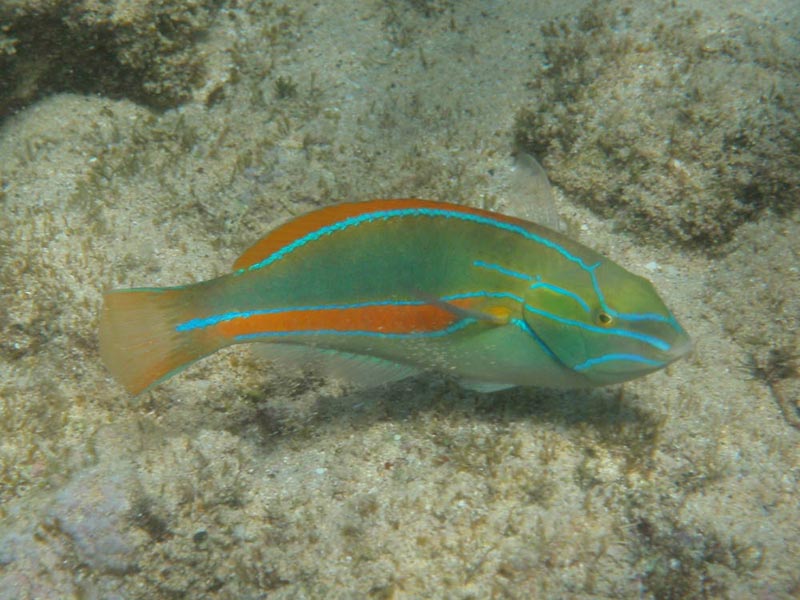Belted Wrasse
ʻōmaka
Stethojulis balteata
Wrasses are one of the most common and captivating reef fishes, and the Hawaiian Islands has over 40 species of them. They are characterized by bright color patterns which vary significantly with age and sex. Most wrasses are elongated and cigar-shaped with one continuous dorsal fin. They have thick lips and sharp teeth that often protrude slightly forward and can be easily seen. These carnivorous fish usually prey on small invertebrates. Most Hawaiian wrasses are small to mid-size, and that largest growing up to about 20 inches. During the day, the flee predators using their speed and agility. At night they hide in holes and cracks, or bury themselves in the sand. Several species spend the night in tidepools.
The family name comes from the Greek name labros, which means "greedy." The word "wrasse" comes from either the celtic urach or the Cornish gwragh. Hawaiʻi has 43 species of wrasses, and 13 of them are endemic. Although not all wrasses have Hawaiian names, a general name is hīnālea. In old Hawaiʻi a pungent condiment was made using partially decomposed wrasses, crushed kukui nuts, and chili pepper. Someone with bad breath was sometimes referred to as a "dish of hīnālea sauce."
Both sexes of the adult Belted Wrasse are grayish with a bright yellow spot at the bottom of the pectoral fin. The terminal males a predominantly green with a few striking blue lines on its head and body and a broad orange stripe from pectoral fin to tail. Belted Wrasses are fast-moving and always on the go. The species name mean "girdled". They grow up to 6 inches and they are endemic to Hawaiʻi.
